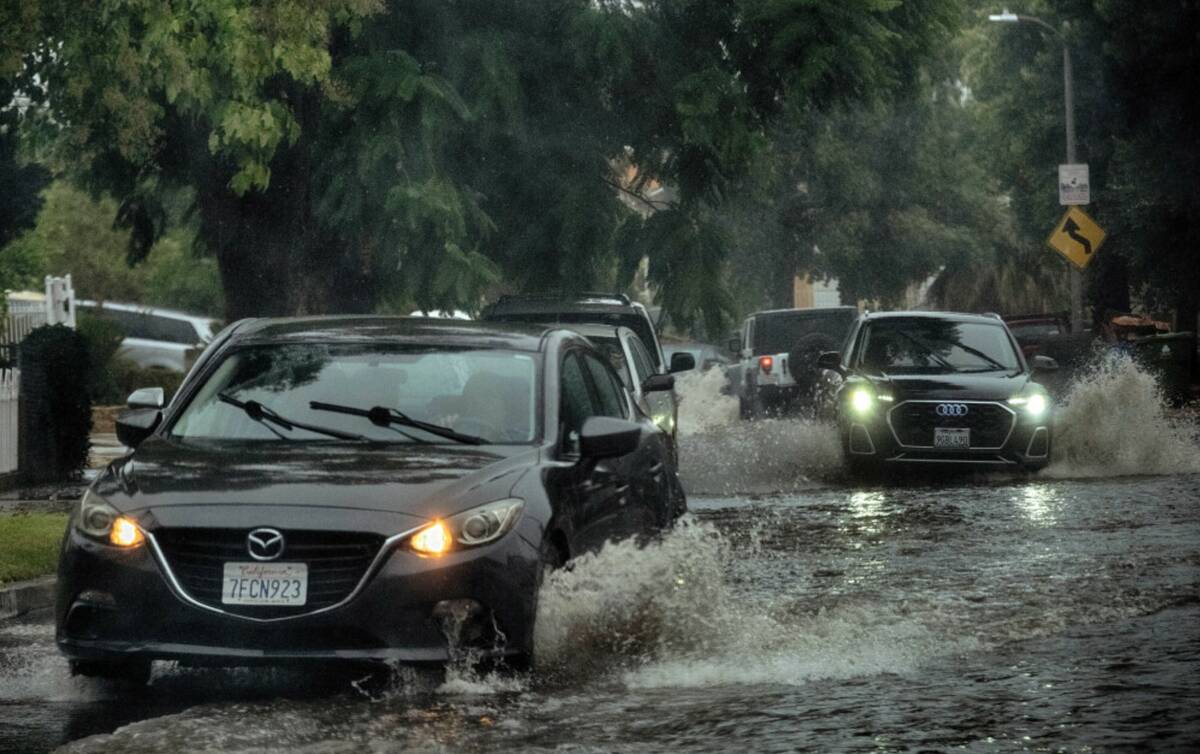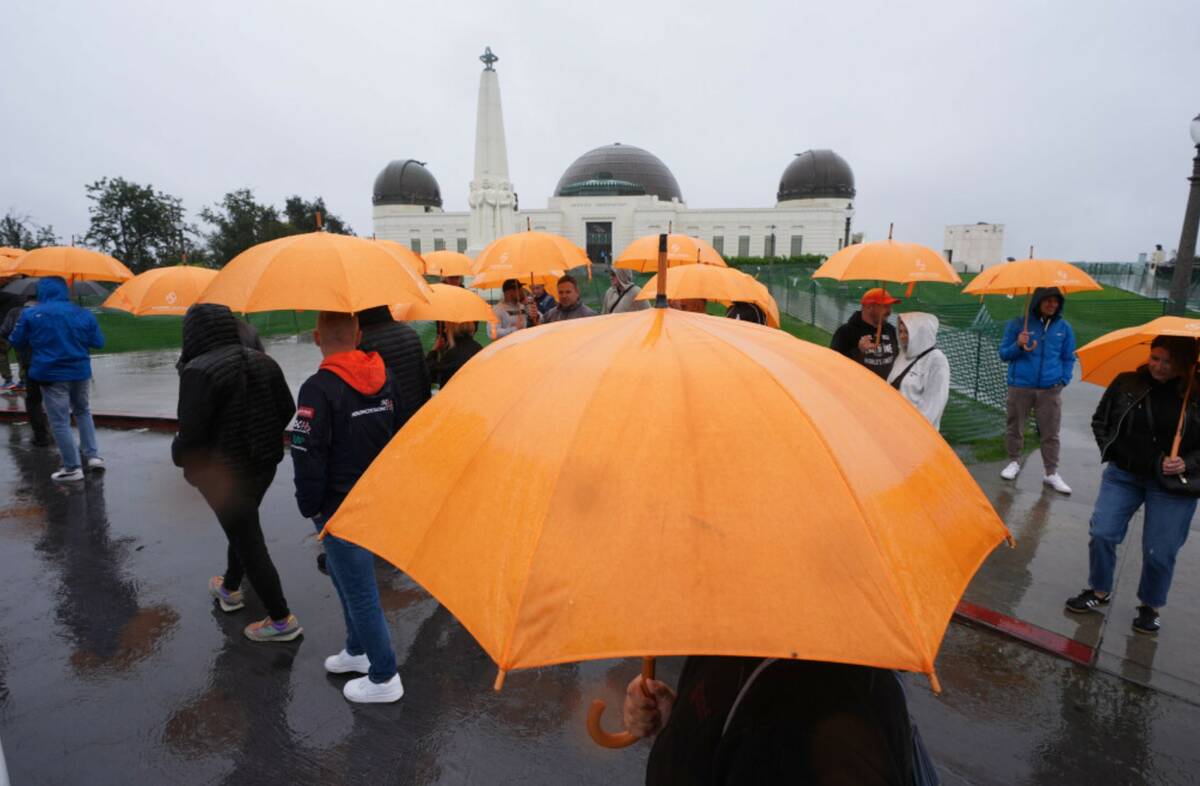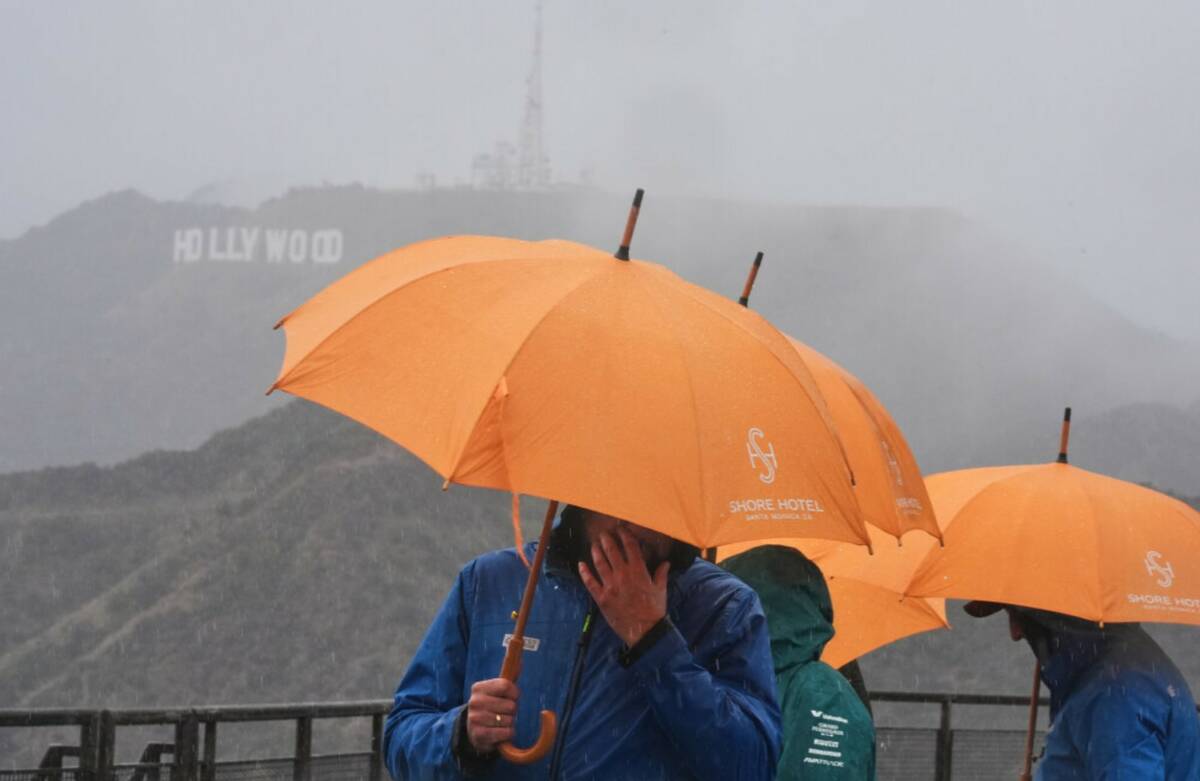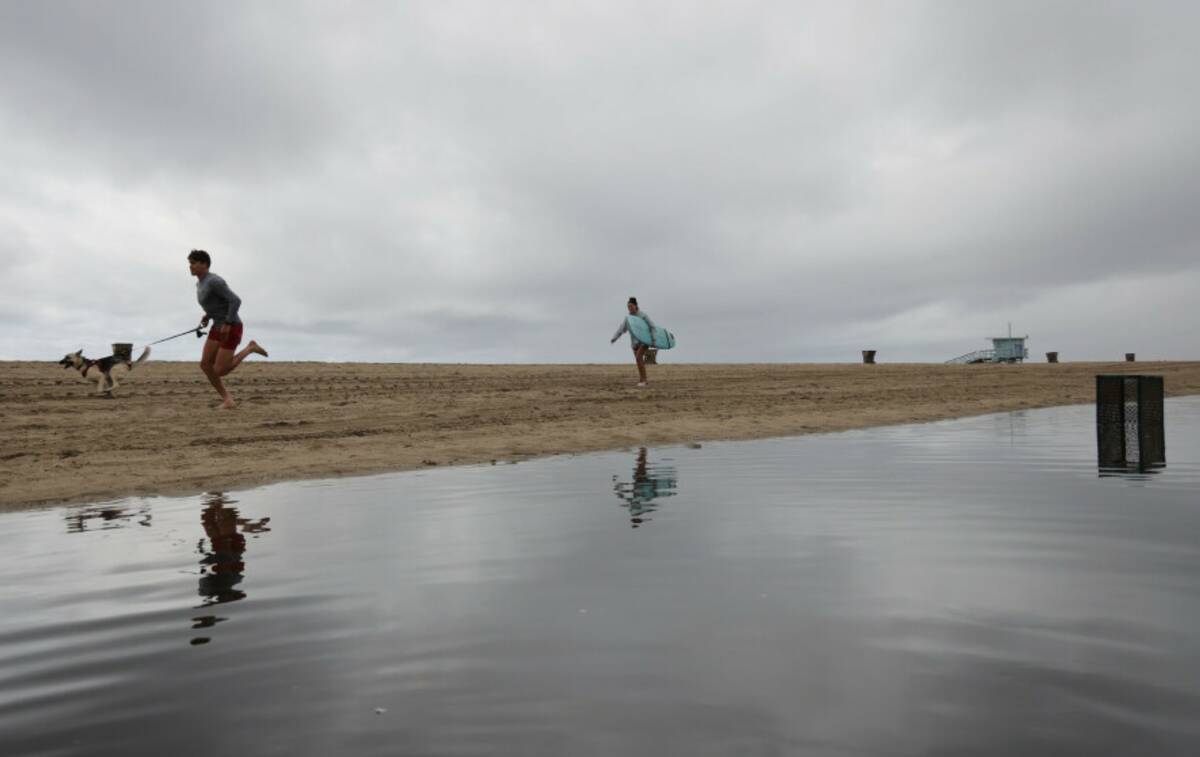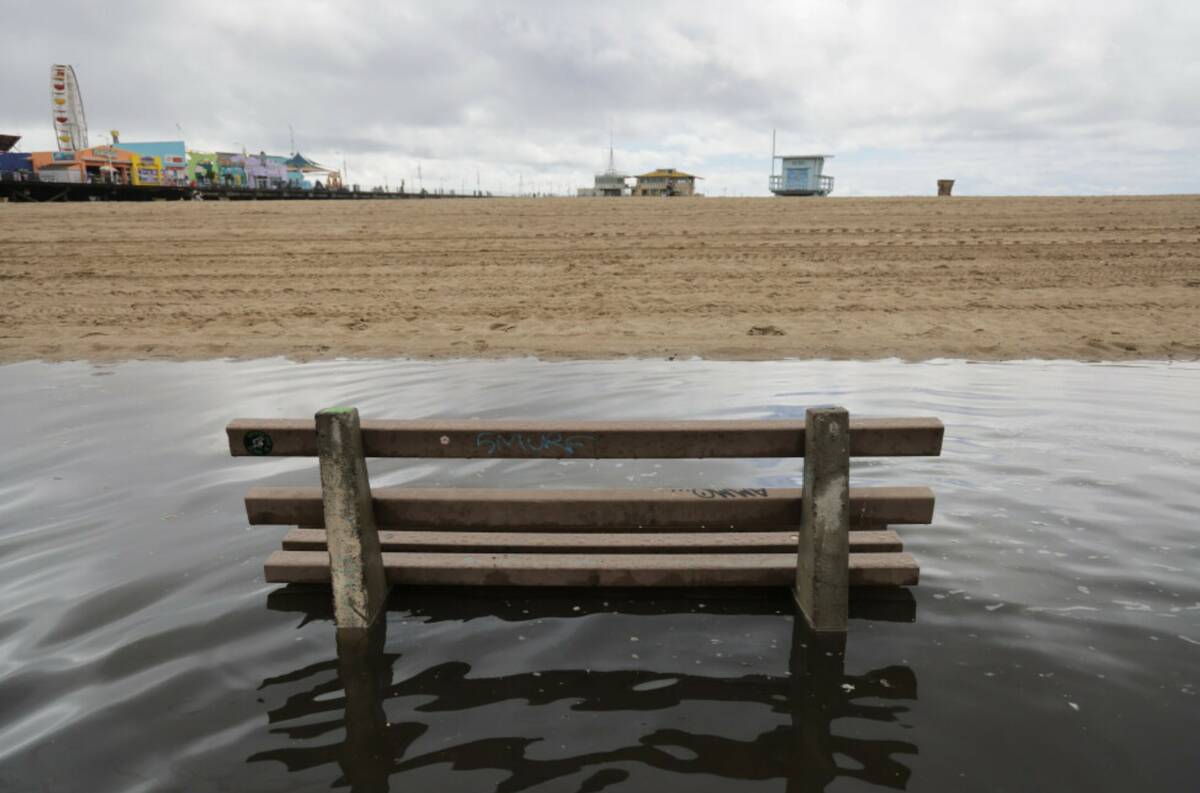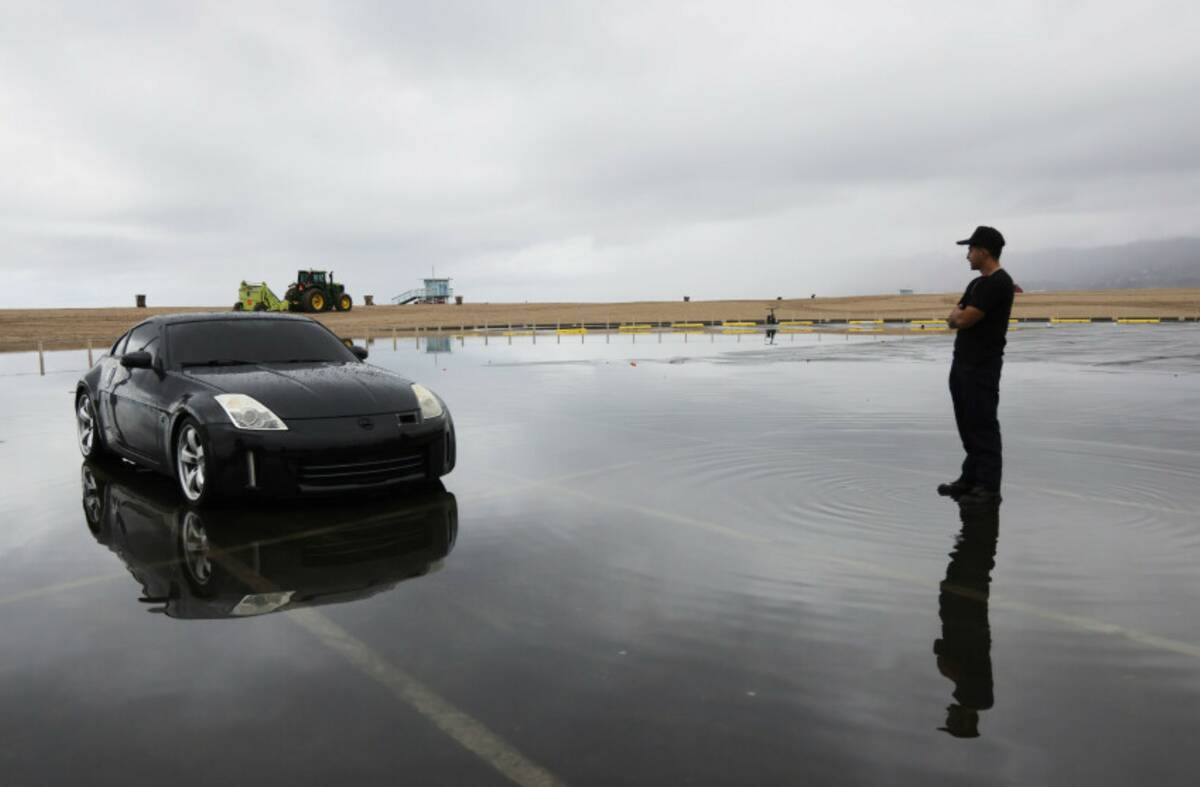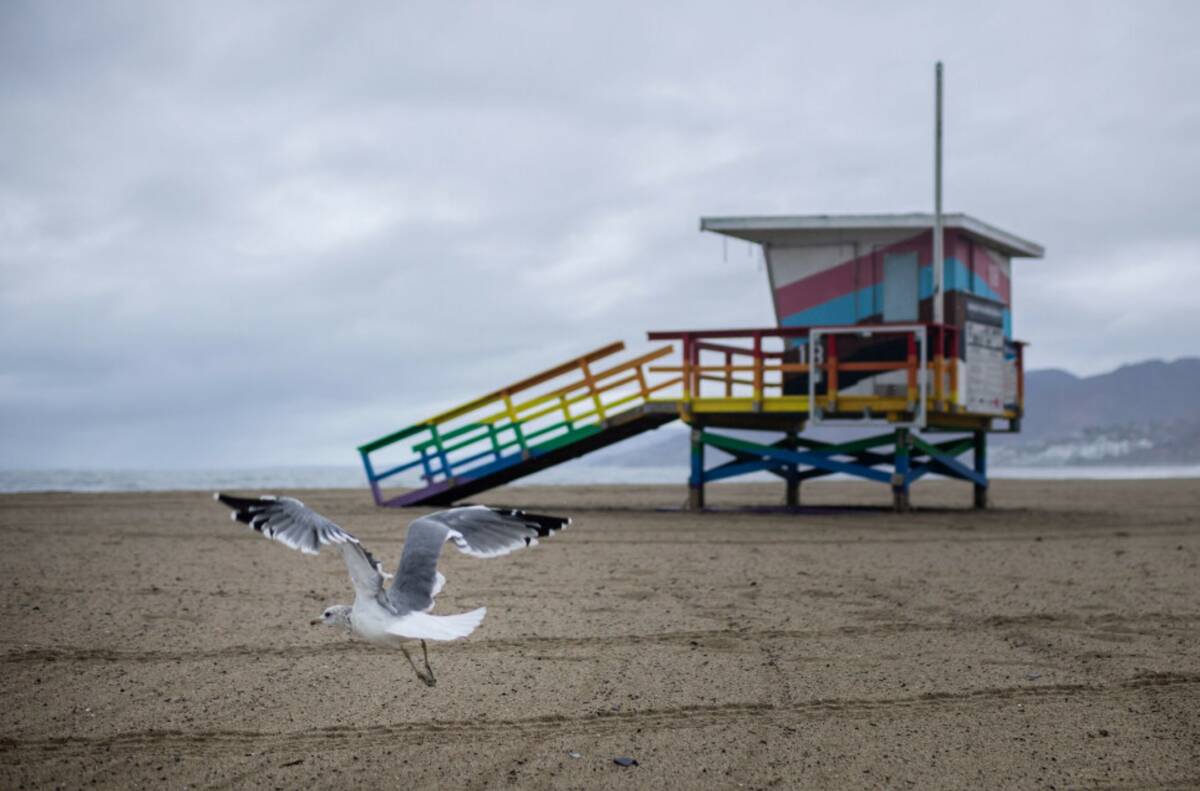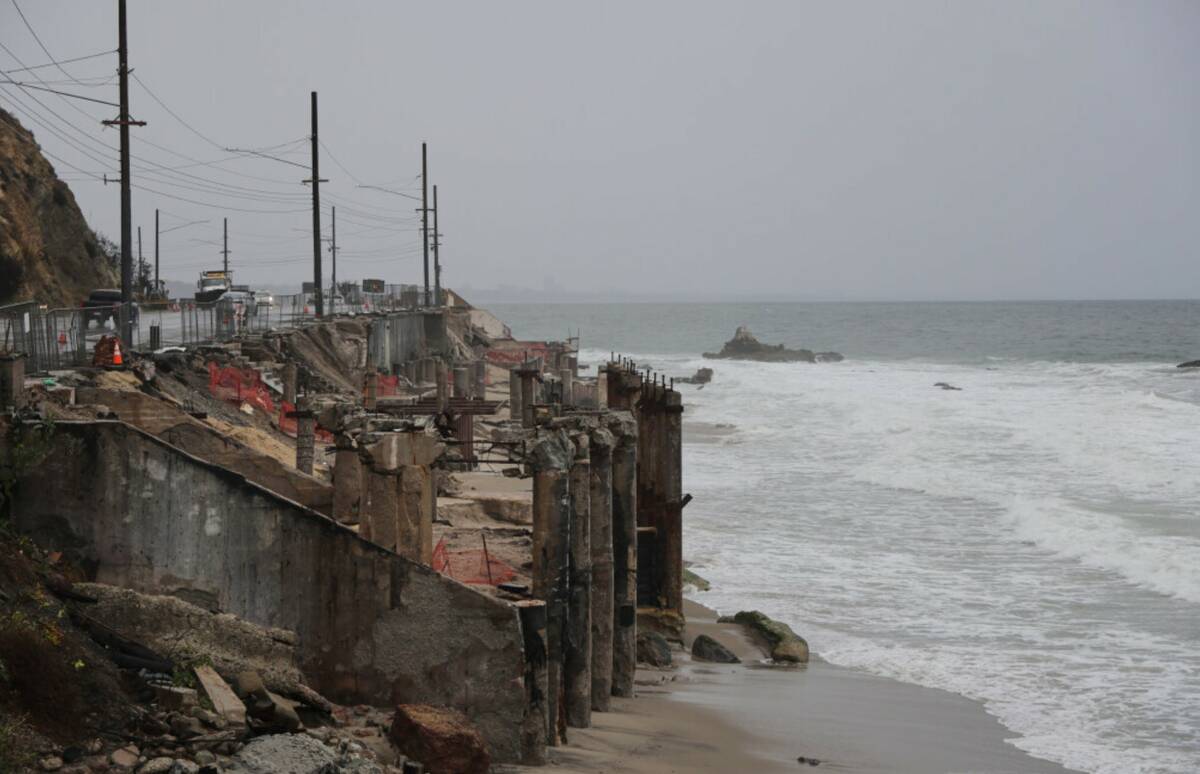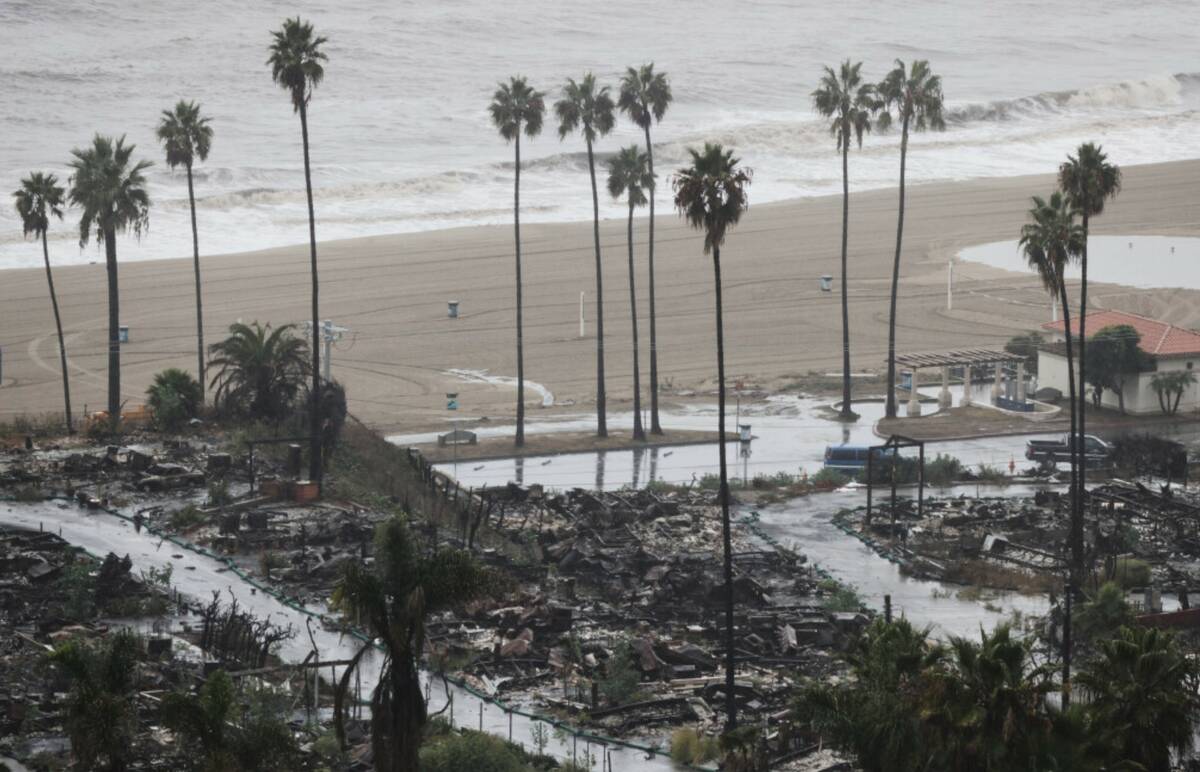Storm pounds LA area with rain, evacuations ordered — PHOTOS
LOS ANGELES — A rare October storm pummeled Southern California with several inches of rain on Tuesday, swelling rivers, causing freeway accidents and prompting evacuations in wildfire-scarred neighborhoods where the threat of mudslides was high.
The National Weather Service issued flash flood warnings in several counties where recent fires left hillsides without vegetation to hold soil in place, making it easier for the terrain to loosen during storms.
By Tuesday afternoon, most areas had recorded up to 1.5 inches of rain, according to the National Weather Service for Los Angeles. Over 5 inches fell in the San Gabriel Mountains northeast of LA.
Firefighters rescued two people and two dogs from the swollen Los Angeles River. A 45-year-old man was hospitalized for exposure and a 30-year-old woman declined transport, the city fire department said.
Authorities ordered the evacuation of about 115 homes, mostly in Pacific Palisades and Mandeville Canyon, where a massive inferno swept through in January. That fire killed more than 30 people and destroyed over 17,000 homes and buildings in Los Angeles County. Evacuation orders were lifted by Tuesday evening.
Fires make the soil become “an oil-like surface” that is impermeable, said David Roth, a forecaster with the Weather Prediction Center in College Park, Maryland.
“It takes years for that to really wear off. The first year after a severe fire or a significant fire is the worst year, and just everything runs off. It’s almost like the ground has become asphalt,” Roth said.
Los Angeles Mayor Karen Bass and other officials warned residents across the region to remain alert and stay indoors.
Still, Alex and Kateryna Tsykhanivski made a wet morning trek to the Griffith Observatory, which usually offers sweeping vistas of Los Angeles. The view Tuesday was obscured by heavy clouds as downpours intensified.
“It doesn’t rain much in LA. So every time we see rain, we like to go out,” Alex Tsykhanivski said.
Southern California has gotten little rain this year
Southern California has seen little precipitation this year, with much of the region under moderate or severe drought, according to the U.S. Drought Monitor.
“It’s definitely welcome rain,” said Curtis Riganti, a climatologist with the National Drought Mitigation Center. “But how much it helps … it’s too soon to tell.”
He said the center will analyze the storm’s potential impact on drought conditions over the next week.
At least two tornado warnings were issued and rockslides were reported, but there was no immediate word of major damage. More than 21,000 customers in Southern and central California had already lost power, according to PowerOutage.us.
In February, torrential rains unleashed debris flows and mudslides in several neighborhoods torched by the January fires. In the community of Sierra Madre, near the site of the Eaton Fire, water, debris and boulders rushed down the mountain, trapping cars in the mud and damaging several home garages. A portion of the Pacific Coast Highway by Pacific Palisades was submerged in at least 3 feet (1 meter) of sludge, and a swift debris flow swept a Los Angeles Fire Department vehicle into the ocean.
Concerns about post-fire debris flows have been especially high since 2018, when mudslides ravaged the Santa Barbara County community of Montecito after a downpour hit burned mountain slopes.
Snow in Sierras
In California’s Sierra Nevada, the Mammoth Mountain Ski Area said it was snowing Tuesday morning. Up to 3 feet (1 meter) of snow was predicted for parts of the mountain range.
Storms in Arizona
In Tempe, Arizona, a microburst and thunderstorm on Monday dropped about a half-inch (1.3 centimeters) of rain within 10 minutes, the weather service said. The storm uprooted trees that toppled onto vehicles and buildings. A business complex had its roof torn off, and thousands of homes lost power.
City Manager Rosa Inchausti said Tuesday that residents could not return to nine apartment buildings and several homes that had been deemed uninhabitable after the extreme weather.




